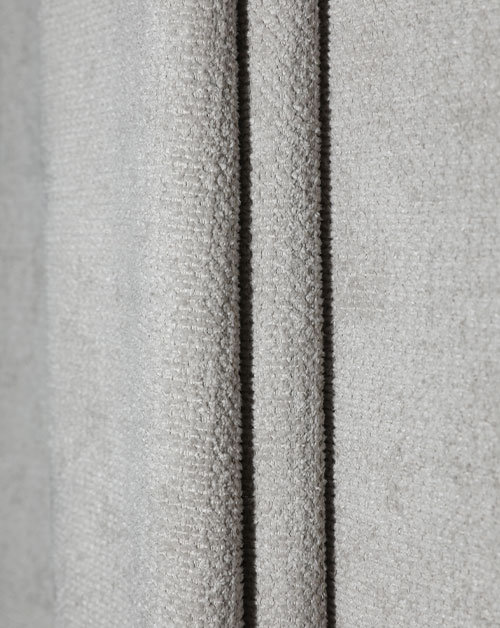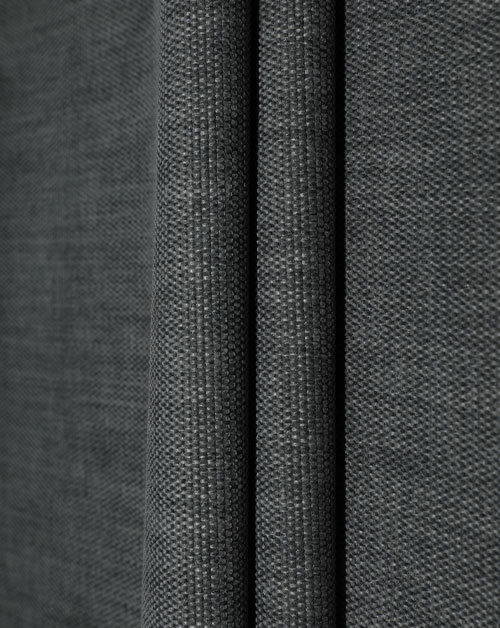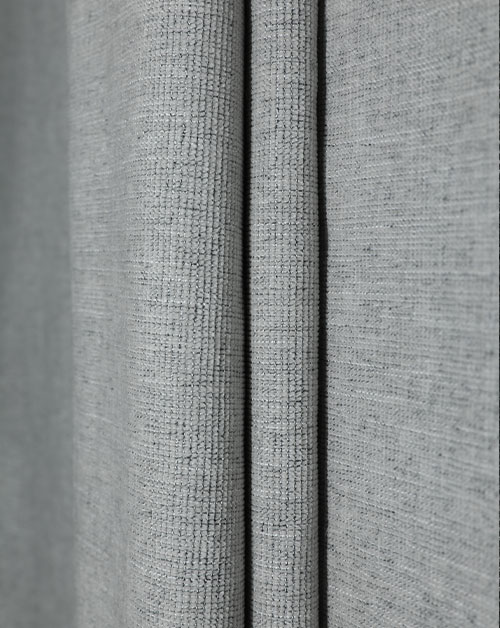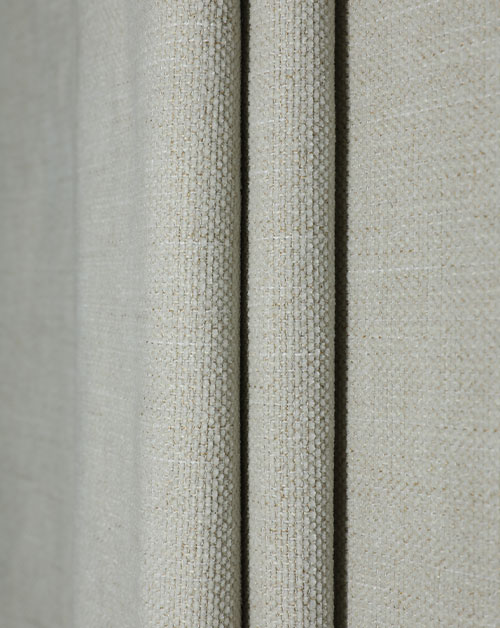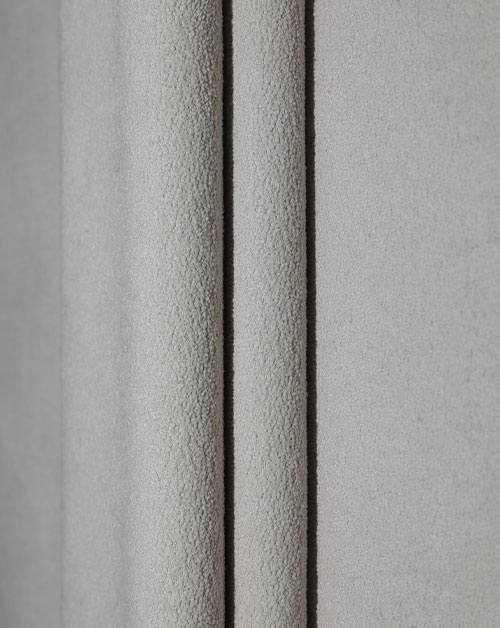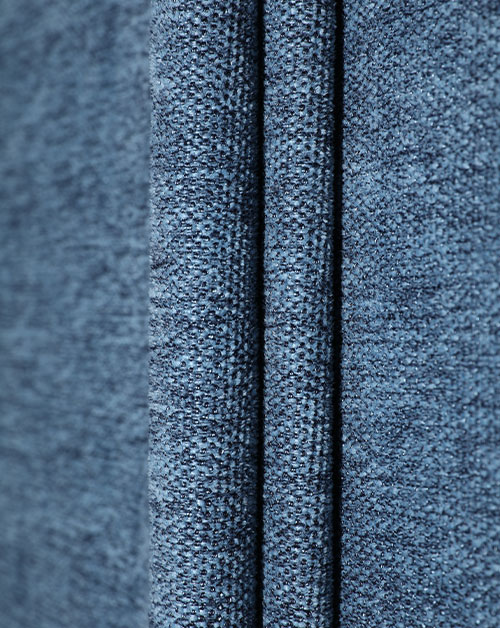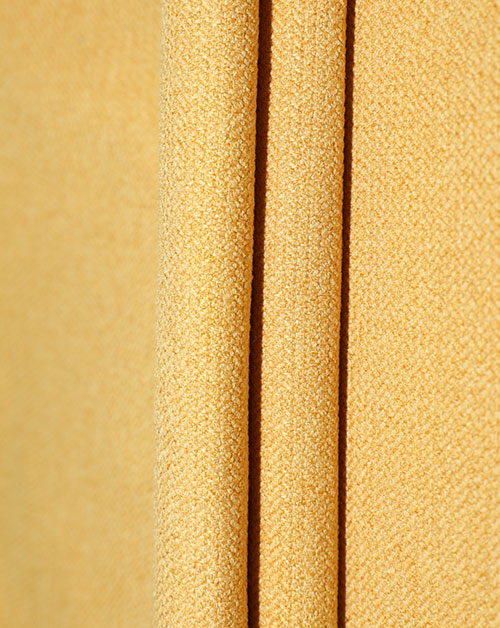Choosing a sofa is a significant investment in your home's comfort and style, and the fabric you select is arguably the most crucial decision. The right fabric can transform a simple piece of furniture into the centerpiece of a room, while the wrong choice can lead to a sofa that looks worn, feels uncomfortable, or is a nightmare to maintain. More than just an aesthetic choice, a sofa's fabric directly impacts its durability, longevity, and how it holds up to the rigors of daily life.
When embarking on this important decision, there are three primary factors to consider: your lifestyle, your budget, and your desired aesthetic. A busy household with children and pets will require a different type of fabric than a formal living room used only for special occasions. Similarly, your budget will influence the range of materials available to you, from luxurious genuine leather to cost-effective synthetic blends. Finally, the fabric's color, texture, and weave all contribute to the overall look and feel of your space, so it's essential to select a material that complements your home's design and reflects your personal style.
---
Types of Sofa Fabrics
The world of sofa fabrics is vast, offering an array of materials with unique characteristics. They can generally be categorized into three main groups: natural, synthetic, and blended fabrics. Understanding the pros and cons of each will help you make an informed decision that suits your needs.
Natural Fabrics
Natural fibers are prized for their breathability, soft hand, and classic appeal.
- Cotton: A popular and versatile choice, cotton is breathable, soft, and relatively inexpensive. It takes to dyes well, offering a wide range of color options. However, it can be susceptible to wrinkles, stains, and fading in direct sunlight. It's best for casual, low-traffic areas where spills are not a major concern.
- Linen: Known for its crisp, elegant appearance, linen is highly durable and resistant to pilling. It's also very breathable, making it comfortable in warmer climates. The trade-off is that linen wrinkles easily and can be expensive. It's ideal for a sophisticated, relaxed aesthetic in a less-used living space.
- Wool: Exceptionally durable, warm, and naturally resistant to pilling, fading, and fire. Wool is also a great insulator and springs back to shape easily. However, it can be scratchy to the touch and is often a more expensive option. Wool is a fantastic choice for a high-quality, long-lasting sofa in a cooler climate.
- Leather: A timeless and luxurious material, leather is known for its incredible durability, natural resistance to stains, and ability to age beautifully. Genuine leather is a significant investment but can last for decades. Faux leather, while more affordable, lacks the breathability and longevity of its genuine counterpart. Both are excellent for high-traffic areas and homes with pets, as they are easy to wipe clean.
- Silk: The epitome of luxury, silk is soft, smooth, and has a beautiful sheen. It is, however, one of the most delicate and expensive sofa fabrics. Silk is highly susceptible to sun damage, stains, and wrinkles, making it an unsuitable choice for everyday use. It is best reserved for formal spaces and decorative pillows.
Synthetic Fabrics
Engineered for performance, synthetic fabrics are celebrated for their durability, stain resistance, and affordability.
- Polyester: As a workhorse of synthetic fabrics, polyester is highly durable, resistant to stretching and shrinking, and easy to clean. It often mimics the feel of natural fibers but is more resistant to fading. Its main con is that it can trap body heat. Polyester is a budget-friendly and practical choice for busy family rooms.
- Microfiber: A type of polyester, microfiber is known for its incredibly soft, suede-like texture. It's tightly woven, making it highly resistant to stains and spills. It's also very durable and easy to clean, making it a top choice for homes with children and pets. Its main downside is that it can attract lint and pet hair.
- Olefin: Made from a synthetic polymer, olefin is exceptionally durable, resistant to moisture, stains, and sunlight. It's commonly used for outdoor furniture due to its high performance. While it's very tough, it can have a rougher texture and is less breathable than other options. Olefin is perfect for sunrooms or furniture that gets a lot of outdoor exposure.
- Acrylic: Designed to mimic the look and feel of wool, acrylic is soft, warm, and resistant to wrinkles, fading, and pilling. It's often used in blends to add durability. However, it can be less durable than other synthetics for heavy use and can be prone to pilling over time. It's a good alternative to wool for a more affordable and sun-resistant option.
- Nylon: Often blended with other fibers, nylon is extremely strong and resilient, making it a great addition for durability. It is also resistant to abrasion. However, it can fade in sunlight and is prone to pilling. It's rarely used on its own for sofa upholstery but is a valuable component in many blended fabrics.
Blended Fabrics
Blended fabrics combine the best properties of natural and synthetic fibers to create a material that is both durable and comfortable.
- Cotton-Polyester blends: This is one of the most common blends. It combines the softness and breathability of cotton with the durability, wrinkle resistance, and affordability of polyester. The result is a fabric that is easy to care for and suitable for high-traffic areas.
- Other common blends: Blends can include a mix of linen and rayon for a softer feel, or wool and acrylic to reduce cost and increase sun resistance. The benefits of blended fabrics are their ability to balance comfort, durability, and price, often creating a material that outperforms a single-fiber fabric in key areas.
---

Key Considerations
Beyond the basic fabric type, several other factors are crucial to a successful and long-lasting sofa choice. These considerations directly impact the sofa's performance, maintenance, and overall comfort.
Durability
The durability of a sofa fabric is a measure of its ability to withstand wear and tear. It's a critical factor, especially for furniture in high-traffic areas.
- Understanding rub counts: The durability of an upholstery fabric is often measured using the Wyzenbeek or Martindale test, which results in a "double rub" count. A higher rub count indicates greater durability. A fabric with 15,000 double rubs is generally suitable for residential use, while a fabric with over 30,000 double rubs is considered heavy-duty and appropriate for commercial use or busy family rooms.
- Best fabrics for high-traffic areas: Performance fabrics like microfiber, leather, and tightly woven synthetics such as olefin and polyester are excellent choices for areas with heavy use. Their inherent strength and stain resistance make them ideal for daily wear and tear.
- Fabrics to avoid for heavy use: Delicate fabrics like silk and loose-weave linen are not recommended for high-traffic areas. They are more likely to snag, tear, and show signs of wear quickly.
Stain Resistance
Stain resistance is a major concern, particularly for families and those who frequently entertain.
- Treatments and finishes: Many fabrics, both natural and synthetic, can be treated with a stain-resistant finish. These treatments create a protective barrier that prevents spills from soaking into the fibers.
- Best stain-resistant fabrics: Naturally resistant fabrics include leather, microfiber, and olefin. Their tight weave or non-porous surface makes it difficult for liquids to penetrate.
- Cleaning tips for different fabrics: Always check the manufacturer's cleaning code (W for water-based, S for solvent-based, WS for both, and X for professional cleaning only). Promptly blotting spills is key for all fabrics, and using a mild soap and water solution is often effective for most performance fabrics.
Maintenance and Cleaning
Proper care extends the life of your sofa and keeps it looking fresh.
- General cleaning advice: Regular vacuuming with a brush attachment helps remove dust and debris that can wear down fibers. Flipping and rotating cushions regularly ensures even wear.
- Specific cleaning instructions for each fabric type:
- Natural fabrics (cotton, linen): Spot clean with a mild, water-based cleaner. Avoid harsh chemicals.
- Synthetics (polyester, microfiber): Most can be cleaned with a mild soap and water solution. Microfiber is particularly easy to maintain.
- Leather: Wipe with a damp cloth and use a leather conditioner to prevent drying and cracking.
- When to hire a professional: For deep cleaning, stubborn stains, or fabrics with a cleaning code of "X," a professional upholstery cleaner is the best option to avoid damaging the material.
Texture and Appearance
The texture and appearance of a fabric are what give a sofa its personality and character.
- Weave types and their impact on appearance:
- Tightly woven fabrics (e.g., twill, canvas): These are generally more durable and have a smooth, uniform appearance.
- Loosely woven fabrics (e.g., tweed, chenille): These have a more textured and casual look, but can be more prone to snagging.
- Pile fabrics (e.g., velvet, corduroy): These have a soft, raised surface that creates a luxurious feel and appearance, but can show wear and tear in high-traffic areas.
- How texture affects comfort and feel: A soft, plush fabric like chenille or velvet is inviting and comfortable, while a smooth, cool fabric like linen offers a more crisp and formal feel.
- Color and pattern considerations: Darker colors and patterns are excellent for hiding stains and everyday dirt. Lighter colors can make a room feel larger and airier but require more vigilant cleaning. Consider how the color and pattern will stand up to direct sunlight, as some fabrics are more prone to fading.
---
Environmental Considerations
As sustainability becomes a growing concern for consumers, the furniture industry is responding with eco-friendly and ethical options. Choosing a sofa fabric with the environment in mind can reduce your carbon footprint and create a healthier home.
Sustainable Fabric Options
Many materials are now being produced with a focus on sustainability, reducing the reliance on new, resource-intensive materials.
- Organic Cotton and Linen: Unlike conventional cotton, organic versions are grown without the use of toxic pesticides or synthetic fertilizers. This not only protects the environment but also results in a fabric free of harmful chemicals. Linen, derived from flax, is another sustainable choice as it requires very little water to grow and is a naturally durable and biodegradable fiber.
- Hemp: This fast-growing plant requires minimal water and no pesticides, making it an excellent sustainable resource. Hemp fibers are known for their strength and durability, making them a long-lasting upholstery option.
- Recycled Wool: Rather than using virgin wool, which requires significant land and resources, recycled wool is made from existing garments and textile scraps. This reduces waste and gives a second life to a naturally fire-retardant and durable material.
- Recycled Polyester (rPET): This is a popular option made from recycled plastic bottles, bags, and other post-consumer waste. By diverting plastic from landfills and oceans, rPET offers a strong, durable, and stain-resistant fabric with a significantly smaller environmental impact than virgin polyester.
Eco-friendly Dyes and Treatments
The environmental impact of a fabric isn't limited to its source material; the dyes and treatments used can also have a significant effect.
- Natural Dyes: Many companies are moving away from chemical-laden synthetic dyes, which can pollute waterways, and instead using natural dyes derived from plants, minerals, and other organic sources. These dyes produce a unique and beautiful range of colors while being biodegradable and non-toxic.
- Non-toxic Finishes: Look for fabrics certified with standards like OEKO-TEX® or Greenguard, which ensure the material is free of harmful chemicals and low in VOCs (volatile organic compounds). This is especially important for stain-resistant and flame-retardant treatments, which can often contain questionable chemicals.
Recycled Fabrics
The use of recycled fabrics is a crucial part of the circular economy in the textile industry.
- Post-consumer recycled materials: These are materials, like plastic bottles or old clothing, that have been used by consumers and are then repurposed. Recycled polyester (rPET) is a prime example of this, offering a durable and easy-to-clean fabric that helps reduce plastic waste.
- Upcycled and Repurposed Fabrics: Some brands are taking old textiles and giving them new life through a process called upcycling. This can involve breaking down old fabrics and re-weaving them into new materials or simply repurposing vintage textiles for a one-of-a-kind look. This approach minimizes waste and energy consumption.
---

Matching Fabric to Your Lifestyle
The perfect sofa fabric is one that not only looks good but also aligns with your daily life. Your living space's primary function—whether it's a bustling family hub or a quiet retreat—should be the main driver of your fabric choice.
Families with Children and Pets
For households where the sofa is a central point of activity, durability and easy cleaning are non-negotiable.
- Best fabrics for durability and stain resistance:
- Microfiber: Its tightly woven, synthetic fibers make it a champion against spills and pet hair. It's soft, durable, and generally easy to spot clean.
- Olefin: Exceptionally tough and resistant to stains, fading, and moisture, olefin is an excellent choice for sunrooms or homes where the sofa is a high-use item.
- Performance Fabrics: These engineered fabrics are designed for high-traffic areas and offer the ultimate protection against spills, odors, and wear.
- Leather: Genuine leather is highly durable and easy to wipe clean, making it a great option for families. Minor scratches from pets often add to its patina over time.
- Fabrics to avoid:
- Delicate fabrics like silk or linen: These are prone to snagging, wrinkling, and staining and will not hold up to the rigors of family life.
- Loose weaves like chenille or tweed: While comfortable, the open weave can easily snag on pet claws or a child's toy.
Formal Living Spaces
In a formal setting, the sofa is more about elegance and style than daily use. This is where you can be more adventurous with your fabric choice.
- Luxurious fabric choices:
- Silk: While not practical for everyday use, silk upholstery on a formal sofa or accent chair creates a look of unparalleled sophistication and luxury.
- Velvet: Its plush texture and rich sheen make velvet a dramatic and elegant choice. While it can be delicate, a high-quality velvet can add a touch of glamour to any room.
- High-quality linen: A crisp linen sofa in a formal setting conveys a sense of refined, understated elegance.
- Fabrics that convey elegance:
- Leather: A top-grain, high-quality leather sofa is a timeless piece that exudes sophistication and can anchor a formal living room.
- Tightly woven wool or wool blends: These fabrics offer a structured, clean look and are durable enough for occasional use while maintaining a luxurious feel.
Casual Living Spaces
For a casual living room or den, comfort and practicality are the top priorities.
- Comfortable and relaxed fabric options:
- Cotton blends: A cotton-polyester blend offers the best of both worlds: the soft feel of cotton with the added durability and wrinkle resistance of polyester.
- Chenille: This fabric is known for its exceptionally soft, fuzzy texture, which makes it perfect for a cozy, inviting atmosphere.
- Twill or denim: A heavy-duty cotton twill or denim can create a relaxed, casual, and durable look reminiscent of classic American design.
- Fabrics that are easy to maintain:
- Polyester and microfiber: These are excellent choices for casual spaces where comfort is key but cleaning needs to be simple and straightforward. Many are resistant to fading and easy to spot clean.
---
Budget Considerations
Your budget will inevitably play a significant role in your sofa fabric choice. While it's tempting to opt for the cheapest option, understanding the trade-offs between cost and quality is essential for a purchase you won't regret.
Price ranges for different fabric types
The cost of sofa fabric varies widely based on the material's source, production process, and overall quality.
- Entry-level (low cost): Polyester, olefin, and certain cotton blends typically fall into this category. These synthetic and blended fabrics are mass-produced and offer a great balance of durability and affordability, making them a popular choice for budget-conscious consumers.
- Mid-range (moderate cost): This category includes high-quality cotton, linen, acrylic, and certain high-performance fabrics. The increased cost often reflects better durability, a more refined feel, and specialized treatments for stain and fade resistance.
- High-end (premium cost): At the top of the price spectrum are materials like genuine leather, wool, silk, and high-end velvet. These fabrics are prized for their luxurious feel, natural properties, and long-term durability. Genuine leather, in particular, is a significant investment but can last for decades, often looking better with age.
Balancing cost and quality
A low-cost fabric may seem like a good deal initially, but if it wears out quickly or is difficult to clean, you may end up spending more in the long run on replacements or professional cleaning. Conversely, a high-end fabric that is not suited for your lifestyle could lead to a costly mistake.
- Invest in durability: If your sofa is in a high-traffic area, prioritizing a durable, high-rub-count fabric—even if it costs more upfront—will save you money and headaches down the road.
- Consider blends: Blended fabrics are an excellent way to get a premium feel without the premium price. A cotton-linen blend, for example, offers the soft touch of linen with the added durability and lower cost of cotton.
- Think long-term: A well-made sofa with a high-quality fabric is an investment. It's often more economical to spend a little extra on a timeless piece that will last for 15-20 years than to buy a new, low-cost sofa every 5 years.
Where to buy sofa fabric
The source of your fabric will also influence the price.
- Furniture retailers: When you purchase a sofa, the fabric is typically priced as part of the total cost. Most retailers offer a range of fabric grades, with higher grades (more durable or luxurious) adding to the final price.
- Online fabric stores: Websites offer a vast selection of upholstery fabrics by the yard, allowing you to choose a custom fabric for an existing piece or a new build. This option is great for custom projects but requires careful measurement and knowledge of fabric types.
- Wholesale fabric suppliers: For professional designers or those buying in bulk, wholesale suppliers offer fabrics at a lower cost per yard. However, they often have minimum order requirements and may not be accessible to the general public.
---
Conclusion
Choosing the right sofa fabric is a decision that balances style, function, and budget. It's a key factor in determining not only the look and feel of your sofa but also its longevity and ease of care. By carefully considering your lifestyle and priorities, you can select a fabric that transforms your sofa into a beloved and enduring piece of furniture.
Recap of key points
- Lifestyle is paramount: The best fabric for a quiet, formal living room is completely different from the best fabric for a busy family room with kids and pets.
- Durability matters: Look at the "double rub" count to understand how well a fabric will stand up to daily use.
- Natural vs. Synthetic: Natural fabrics like cotton and linen offer breathability and a classic look, while synthetics like polyester and microfiber provide superior durability and stain resistance. Blends offer a great middle ground.
- Performance fabrics are a game changer: Engineered fabrics have revolutionized upholstery with materials that are both beautiful and incredibly resilient to stains, moisture, and fading.
- Don't forget the environment: Eco-friendly options like organic cotton, recycled polyester, and hemp offer a sustainable choice without compromising on quality or aesthetics.
Final recommendations based on different needs
- For families with children and pets: Opt for durable, stain-resistant materials. Your best bets are microfiber, leather, or a performance fabric. These will stand up to spills and wear with minimal fuss.
- For a formal, elegant space: Focus on luxurious feel and appearance. Consider velvet, high-quality linen, or top-grain leather to create a sophisticated and refined atmosphere.
- For a casual and comfortable living space: Prioritize soft textures and easy maintenance. Cotton blends, chenille, or durable polyester will provide a cozy and inviting feel that is practical for everyday relaxation.
- For a budget-friendly option: You can't go wrong with polyester or a polyester blend. It's affordable, durable, and comes in a wide variety of colors and textures.

 English
English 中文简体
中文简体 русский
русский عربى
عربى